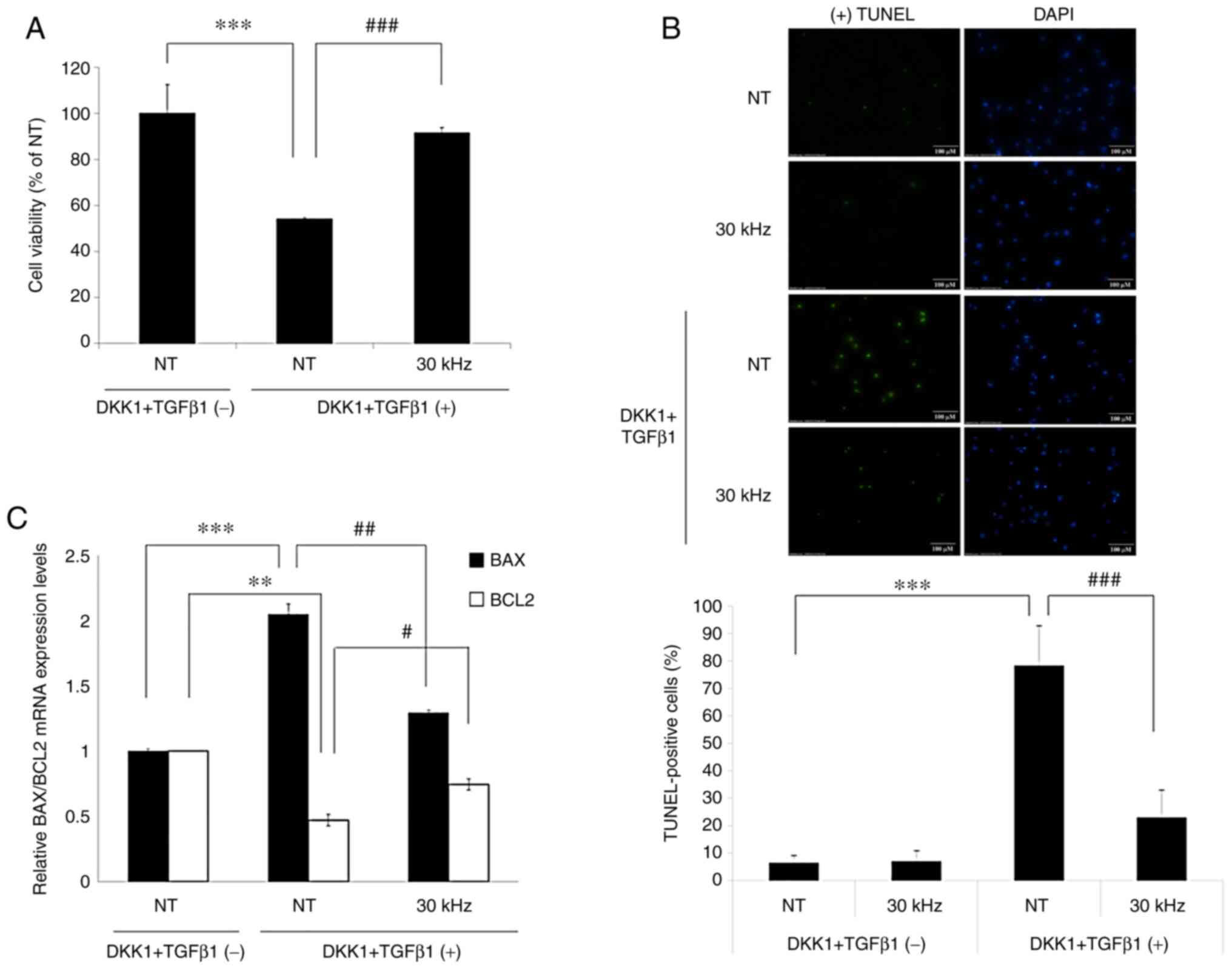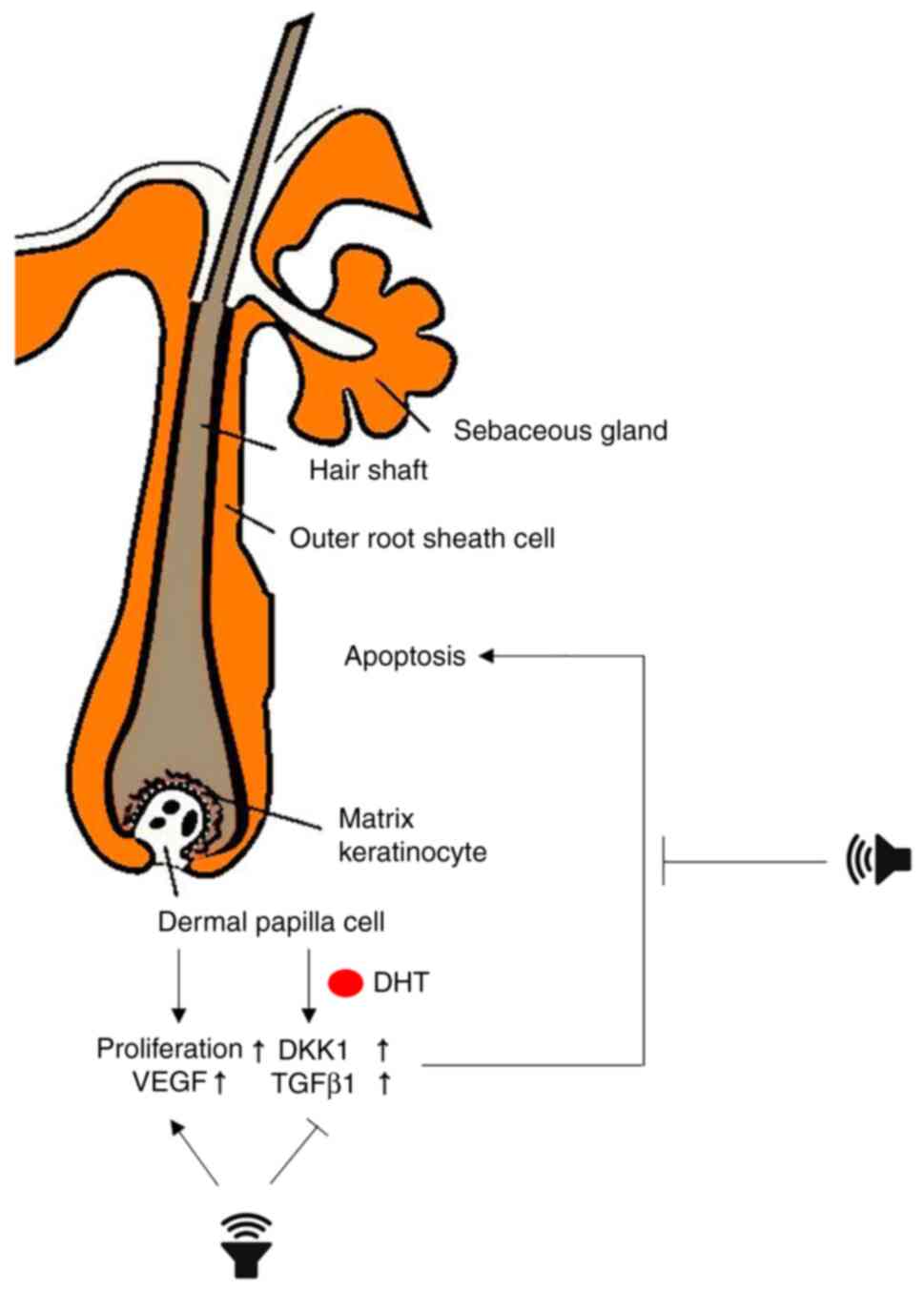|
1
|
Imperato-McGinley J, Guerrero L, Gautier T
and Peterson RE: Steroid 5alpha-reductase deficiency in man: An
inherited form of male pseudohermaphroditism. Science.
186:1213–1215. 1974.PubMed/NCBI View Article : Google Scholar
|
|
2
|
Kaufman KD, Girman CJ, Round EM,
Johnson-Levonas AO, Shah AK and Rotonda J: Progression of hair loss
in men with androgenetic alopecia (male pattern hair loss):
Long-term (5-year) controlled observational data in placebo-treated
patients. Eur J Dermatol. 18:407–411. 2008.PubMed/NCBI View Article : Google Scholar
|
|
3
|
Hamilton JB: Patterned loss of hair in
man: Types and incidence. Ann NY Acad Sci. 53:708–728.
1951.PubMed/NCBI View Article : Google Scholar
|
|
4
|
Gan DC and Sinclair RD: Prevalence of male
and female pattern hair loss in Maryborough. J Investig Dermatol
Symp Proc. 10:184–189. 2005.PubMed/NCBI View Article : Google Scholar
|
|
5
|
Shankar DK, Chakravarthi M and Shilpakar
R: Male androgenetic alopecia: Population-based study in 1,005
subjects. Int J Trichology. 1:131–133. 2009.PubMed/NCBI View Article : Google Scholar
|
|
6
|
Cash TF: The psychological effects of
androgenetic alopecia in men. J Am Acad Dermatol. 26:926–931.
1992.PubMed/NCBI View Article : Google Scholar
|
|
7
|
Cash TF, Price VH and Savin RC:
Psychological effects of androgenetic alopecia on women:
Comparisons with balding men and with female control subjects. J Am
Acad Dermatol. 29:568–575. 1993.PubMed/NCBI View Article : Google Scholar
|
|
8
|
Ludwig E: Classification of the types of
androgenetic alopecia (common baldness) occurring in the female
sex. Br J Dermatol. 97:247–254. 1977.PubMed/NCBI View Article : Google Scholar
|
|
9
|
Friedman ES, Friedman PM, Cohen DE and
Washenik K: Allergic contact dermatitis to topical minoxidil
solution: Etiology and treatment. J Am Acad Dermatol. 46:309–312.
2002.PubMed/NCBI View Article : Google Scholar
|
|
10
|
Irwig MS and Kolukula S: Persistent sexual
side effects of finasteride for male pattern hair loss. J Sex Med.
8:1747–1753. 2011.PubMed/NCBI View Article : Google Scholar
|
|
11
|
Samplaski MK, Lo K, Grober E and Jarvi K:
Finasteride use in the male infertility population: Effects on
semen and hormone parameters. Fertil Steril. 100:1542–1546.
2013.PubMed/NCBI View Article : Google Scholar
|
|
12
|
Amory JK, Wang C, Swerdloff RS, Anawalt
BD, Matsumoto AM, Bremner WJ, Walker SE, Haberer LJ and Clark RV:
The effect of 5alpha-reductase inhibition with dutasteride and
finasteride on semen parameters and serum hormones in healthy men.
J Clin Endocrinol Metab. 92:1659–1665. 2007.PubMed/NCBI View Article : Google Scholar
|
|
13
|
Anita KG, Neetu S and Prashant S: Atypical
post-finasteride syndrome: A pharmacological riddle. Indian J
Pharmacol. 48:316–317. 2016.PubMed/NCBI View Article : Google Scholar
|
|
14
|
Egger A, Resnik S, Aickara D, Maranda E,
Kaiser M, Wikramanayake TC and Jimenez JJ: Examining the safety and
efficacy of low-level laser therapy for male and female pattern
hair loss: A review of the literature. Skin Appendage Disord.
6:259–267. 2020.PubMed/NCBI View Article : Google Scholar
|
|
15
|
Kim H, Choi JW, Kim JY, Shin JW, Lee SJ
and Huh CH: Low-level light therapy for androgenetic alopecia: A
24-week, randomized, double-blind, sham device-controlled
multicenter trial. Dermatol Surg. 39:1177–1183. 2013.PubMed/NCBI View Article : Google Scholar
|
|
16
|
Jimenez JJ, Wikramanayake TC, Bergfeld W,
Hordinsky M, Hickman JG, Hamblin MR and Schachner LA: Efficacy and
safety of a low-level laser device in the treatment of male and
female pattern hair loss: A multicenter, randomized, sham
device-controlled, double-blind study. Am J Clin Derm. 15:115–127.
2014.PubMed/NCBI View Article : Google Scholar
|
|
17
|
Lanzafame RJ, Blanche RR, Bodian AB,
Chiacchierini RP, Fernandez-Obregon A and Kazmirek ER: The growth
of human scalp hair mediated by visible red light laser and LED
sources in males. Lasers Surg Med. 45:487–495. 2013.PubMed/NCBI View Article : Google Scholar
|
|
18
|
Woodcock JP: Doppler ultrasound in
clinical diagnosis. Br Med Bull. 36:243–248. 1980.PubMed/NCBI View Article : Google Scholar
|
|
19
|
Vranić E: Sonophoresis-mechanisms and
application. Bosn J Basic Med Sci. 4:25–32. 2004.PubMed/NCBI View Article : Google Scholar
|
|
20
|
Boucaud A: Trends in the use of
ultrasound-mediated transdermal drug delivery. Drug Discov Today.
9:827–828. 2004.PubMed/NCBI View Article : Google Scholar
|
|
21
|
Gebauer D, Mayr E, Orthner E and Ryaby JP:
Low-intensity pulsed ultrasound: Effects on nonunions. Ultrasound
Med Biol. 31:1391–1402. 2005.PubMed/NCBI View Article : Google Scholar
|
|
22
|
Kremkau FW: Cancer therapy with
ultrasound: A historical review. J Clin Ultrasound. 7:287–300.
1979.PubMed/NCBI View Article : Google Scholar
|
|
23
|
Oohashi T, Nishina E, Honda M, Yonekura Y,
Fuwamoto Y, Kawai N, Maekawa T, Nakamura S, Fukuyama H and
Shibasaki H: Inaudible high-frequency sounds affect brain activity:
Hypersonic effect. J Neurophysiol. 83:3548–3558. 2000.PubMed/NCBI View Article : Google Scholar
|
|
24
|
Oohashi T, Kawai N, Nishina E, Honda M,
Yagi R, Nakamura S, Morimoto M, Maekawa T, Yonekura Y and Shibasaki
H: The role of biological system other than auditory air-conduction
in the emergence of the hypersonic effect. Brain Res.
1073-1074:339–347. 2006.PubMed/NCBI View Article : Google Scholar
|
|
25
|
Kawai N, Honda M, Nakamura S, Samatra P,
Sukardika K, Nakatani Y, Shimojo N and Oohashi T: Catecholamines
and opioid peptides increase in plasma in humans during possession
trances. Neuroreport. 12:3419–3423. 2001.PubMed/NCBI View Article : Google Scholar
|
|
26
|
Yagi R, Nishina E, Honda M and Oohashi T:
Modulatory effect of inaudible high-frequency sounds on human
acoustic perception. Neurosci Lett. 351:191–195. 2003.PubMed/NCBI View Article : Google Scholar
|
|
27
|
Denda M and Nakatani M: Acceleration of
permeability barrier recovery by exposure of skin to 10-30 kHz
sound. Br J Dermatol. 162:503–507. 2010.PubMed/NCBI View Article : Google Scholar
|
|
28
|
Magerl M, Kauser S, Paus R and Tobin DJ:
Simple and rapid method to isolate and culture follicular papillae
from human scalp hair follicles. Exp Dermatol. 11:381–385.
2002.PubMed/NCBI View Article : Google Scholar
|
|
29
|
Messenger AG: The culture of dermal
papilla cells from human hair follicles. Br J Dermatol.
110:685–689. 1984.PubMed/NCBI View Article : Google Scholar
|
|
30
|
Philpott MP, Sanders DA and Kealey T:
Effects of insulin and insulin-like growth factors on cultured
human hair follicles: IGF-I at physiologic concentrations is an
important regulator of hair follicle growth in vitro. J Invest
Dermatol. 102:857–861. 1994.PubMed/NCBI View Article : Google Scholar
|
|
31
|
Livak KJ and Schmittgen TD: Analysis of
relative gene expression data using real-time quantitative PCR and
the 2(-Delta Delta C(T)) method. Methods. 25:402–408.
2001.PubMed/NCBI View Article : Google Scholar
|
|
32
|
Kwack MH, Sung YK, Chung EJ, Im SU, Ahn
JS, Kim MK and Kim JC: Dihydrotestosterone-inducible dickkopf 1
from balding dermal papilla cells causes apoptosis in follicular
keratinocytes. J Invest Dermatol. 128:262–269. 2008.PubMed/NCBI View Article : Google Scholar
|
|
33
|
Philpott MP, Green MR and Kealey T: Human
hair growth in vitro. J Cell Sci. 97:463–471. 1990.PubMed/NCBI
|
|
34
|
Miyauchi S, Hashimoto K and Miki Y: The
innermost cell layer of the outer root sheath is positive with
Ki-67. J Invest Dermatol. 95(393)1990.PubMed/NCBI View Article : Google Scholar
|
|
35
|
Commo S and Bernard BA:
Immunohistochemical analysis of tissue remodelling during the
Anagen-catagen transition of the human hair follicle. Br J
Dermatol. 137:131–38. 1997.PubMed/NCBI
|
|
36
|
Messenger AG and Rundegren J: Minoxidil:
Mechanisms of action on hair growth. Br J Dermatol. 150:186–194.
2004.PubMed/NCBI View Article : Google Scholar
|
|
37
|
Kwack MH, Kim MK, Kim JC and Sung YK:
Dickkopf 1 promotes regression of hair follicles. J Invest
Dermatol. 132:1554–1560. 2012.PubMed/NCBI View Article : Google Scholar
|
|
38
|
Foitzik K, Lindner G, Mueller-Roever S,
Maurer M, Botchkareva N, Botchkarev V, Handjiski B, Metz M, Hibino
T, Soma T, et al: Control of murine hair follicle regression
(catagen) by TGF-beta1 in vivo. FASEB J. 14:752–760.
2000.PubMed/NCBI View Article : Google Scholar
|
|
39
|
Kuttenn F, Mowszowicz I, Wright F, Baudot
N, Jaffiol C, Robin M and Mauvais-Jarvis P: Male
pseudohermaphroditism: A comparative study of one patient with 5
alpha-reductase deficiency and three patients with the complete
form of testicular feminization. J Clin Endocrinol Metab.
49:861–865. 1979.PubMed/NCBI View Article : Google Scholar
|
|
40
|
Randall VA, Thornton MJ, Hamada K and
Messenger AG: Androgen action in cultured dermal papilla cells from
human hair follicles. Skin Pharmacol. 7:20–26. 1994.PubMed/NCBI View Article : Google Scholar
|
|
41
|
Riccio G, Bottone S, La Regina G, Badolati
N, Passacantilli S, Rossi GB, Accardo A, Dentice M, Silvestri R,
Novellino E and Stornaiuolo M: A negative allosteric modulator of
WNT receptor Frizzled 4 switches into an allosteric agonist.
Biochemistry. 57:839–851. 2018.PubMed/NCBI View Article : Google Scholar
|
|
42
|
Abramavičius S, Volkevičiūtė A, Tunaitytė
A, Venslauskas M, Bubulis A, Bajoriūnas V and Stankevičius E:
Low-Frequency (20 kHz) ultrasonic modulation of drug action.
Ultrasound Med Biol. 46:3017–3031. 2020.PubMed/NCBI View Article : Google Scholar
|
|
43
|
Zhao Q, Lu Y, Gan X and Yu H: Low
magnitude high frequency vibration promotes adipogenic
differentiation of bone marrow stem cells via P38 MAPK signal. PLoS
One. 12(e0172954)2017.PubMed/NCBI View Article : Google Scholar
|
|
44
|
Nikukar H, Reid S, Tsimbouri PM, Riehle
MO, Curtis AS and Dalby MJ: Osteogenesis of mesenchymal stem cells
by nanoscale mechanotransduction. ACS Nano. 7:2758–2767.
2013.PubMed/NCBI View Article : Google Scholar
|
|
45
|
Mammoto A, Mammoto T and Ingber DE:
Mechanosensitive mechanisms in transcriptional regulation. J Cell
Sci. 125:3061–3073. 2012.PubMed/NCBI View Article : Google Scholar
|
|
46
|
Ricca BL, Venugopalan G and Fletcher DA:
To pull or be pulled: Parsing the multiple modes of
mechanotransduction. Curr Opin Cell Biol. 25:558–564.
2013.PubMed/NCBI View Article : Google Scholar
|
|
47
|
Engler AJ, Sen S, Sweeney HL and Discher
DE: Matrix elasticity directs stem cell lineage specification.
Cell. 126:677–689. 2006.PubMed/NCBI View Article : Google Scholar
|
|
48
|
Thompson M, Woods K, Newberg J, Oxford JT
and Uzer G: Low-intensity vibration restores nuclear YAP levels and
acute YAP nuclear shuttling in mesenchymal stem cells subjected to
simulated microgravity. NPJ Microgravity. 6(35)2020.PubMed/NCBI View Article : Google Scholar
|














